We honor more than 470 teachers this month who work tirelessly to educate over 7,500 students on the four inhabited Galapagos islands. They are more than just teachers — they’re guides and mentors who actively shape the holistic development and future generations.
In their work as teachers they do not only impart academic knowledge, but also values, social skills and environmental awareness. These qualities are crucial for developing a sense of civic responsibility and a commitment to protecting the unique environment on Galapagos. These educators are essential in promoting the future of the Galapagos archipelago and, dare say, Ecuador and beyond.
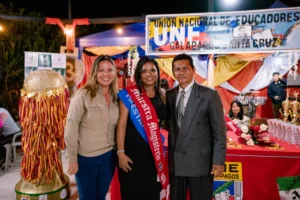
©Galápagos Conservancy
Our education expert, Jenny Macias at Galapagos Conservancy said that we are committed to improving education and highlighting the importance of sustainability within our community. She said that the teachers’ direct influence on students helps to raise environmental awareness.
During a recent Galapagos Education District event, which brought together teachers and students on four inhabited Islands to play traditional games and celebrate their careers, the National Union of Educators and Galapagos Conservancy recognized the contributions of teachers to the development of the province.
We value their willingness to impart their knowledge and experience to students as well as the passion and ability of future generations to be inspired and motivated. We are committed in continuing to support education improvement and working closely with educators to build a future sustainable for the archipelago. Together, we can create a better tomorrow for Galapagos.
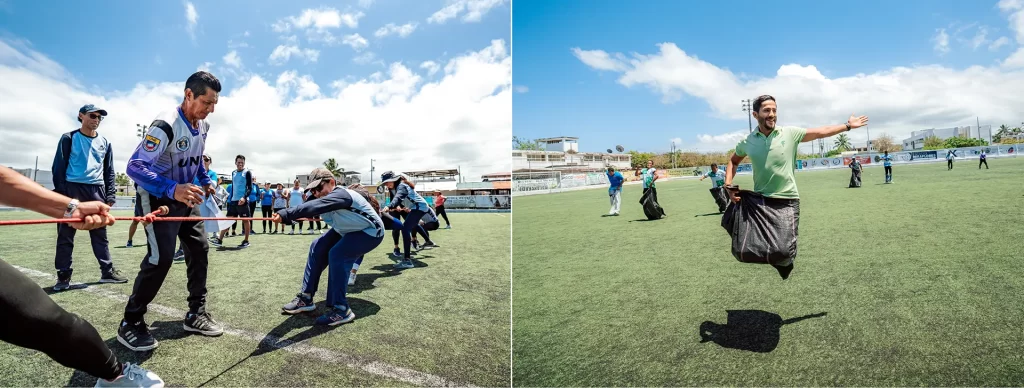
©Galápagos Conservancy
Galapagos Conservation has a commitment to conservation of Galapagos species and ecosystems. We support projects which produce valuable scientific data to assist managers in making informed decisions. We support research and conservation efforts for the pinnipeds on Galapagos. Pinnipeds are fur seals and marine lions. Researchers Drs. Diego Paez from Universidad San Francisco de Quito and Marjorie Riofrio, both of Universidad San Francisco de Quito, assess the health status of marine ecosystems in relation to climate change. This research was funded by our conservation grants program.
Pinnipeds undergo annual monitoring and study.
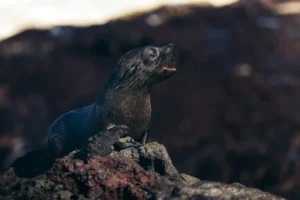
©Galápagos Conservancy
The cruise is a vital part of the pinniped study. The cruise is also a good tool for monitoring and scientific research. This event will be organized by Galapagos National Park Directorate, Universidad San Francisco de Quito and Agency for Regulation and Control of Biosecurity and Quarantine for Galapagos. This year’s Expedition was sponsored by the Galapagos Conservancy and Charles Darwin Foundation. The two-week long expedition took place between March and April.
Scientists and technicians board the ship Sierra Negra, owned by the Galapagos National Park Directorate. Riofrio’s aboard. He is a scientist at the Galapagos National Park Directorate. He visited 14 islands during his trip. He estimated pinniped population at 30 sites.
The team conducted an assessment to determine the growth of Fur Seals and Sea Lions. At each site, animals were captured to collect biological samples such as whiskers and blood. Hair, skin, nasal/rectal samples and other biological specimens were collected. The samples were collected to analyze the diet and health of animals as well as environmental changes.
Riofrio said that the expedition this year was held in the hottest time of the year and not during the peak breeding season for these species. She said that El Nino could have a negative effect on these populations. She said that “this highlights the importance of closely monitoring Galapagos pinniped, and understanding climate changes affecting the existence of these populations.”
The Importance of Pinnipeds in Galapagos for Ecological Purpose
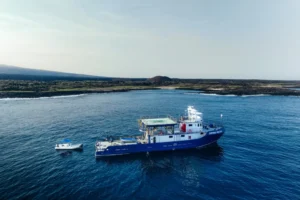
©Galápagos Conservancy
The Galapagos Archipelago is home to many marine animals, including fur seals, sea lions and others. Their behavior can give valuable information about the health of the oceans around these islands. These top predators that eat marine animals and fish may help maintain the food chain. They can alert us to changes in the marine ecosystem and possible threats. The Galapagos eco-system and its survival are dependent on the sea lions.
Your support has a positive effect
Only you can protect Galapagos ecosystems, and help conduct scientific research. We appreciate your support and dedication to protecting the natural beauty of Galapagos. Jorge Carrion, Galapagos Conservation Director, believes scientific research is essential for sound conservation decisions. Galapagos wildlife cannot be protected unless we understand ecosystem dynamics.
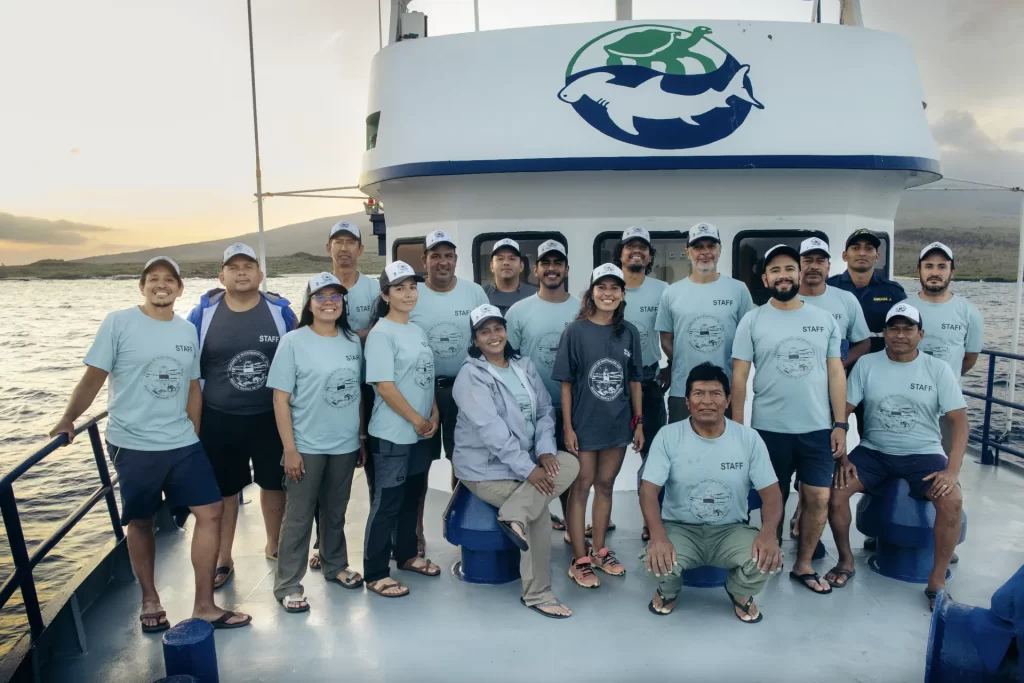
©Galápagos Conservancy
The Galapagos Conservancy team successfully conducted 14 conservation expeditions on six different islands last year as part of the Iniciativa Galapagos Program, a collaborative effort with Galapagos National Park Directorate. The team visited the serene beaches in Santa Cruz, the interior of Espanola Island and the interior of Fernandina Island. They also explored the clear waters of Isabela Island. Each field mission had its own challenges, but the goal was the same: conserve the unique species of the Galapagos Archipelago.
Over 500 juvenile giant turtles hatched in captivity and raised there were the focus of many expeditions. In March, an expedition to Espanola Island involved the repatriation 86 juvenile Chelonoidis Hoodensis tortoises. This was a critical step in the tortoise’s reoccupation of this island. In the 1960s only 14 individuals remained of this species. The tortoise populations has grown to approximately 3,000 individuals through efforts like those made during this expedition to repatriate juvenile tortoises that were bred in captivity. The captive breeding program was closed due to its success. There are still 250 tortoises held in captivity on Santa Cruz Island at the Breeding Center, waiting for the perfect time to be released on an upcoming expedition to Espanola Island.
The 2023 expeditions were primarily focused on conducting the first comprehensive census of ten populations of giant turtles living in the southern volcanoes Isabela Island. The preliminary data shows that the Chelonoidis Vicina population, which lives on Cerro Azul Volcano, has a slight recover. It is estimated to be 5,275 individuals. Chelonoidis Guntheri however, only lives on Sierra Negra Volcano. The situation is still worrying. The team estimated that there were only 704 individuals in the population. These expeditions revealed critical insights about the challenges facing both species and what they can do to assist them in recovering.
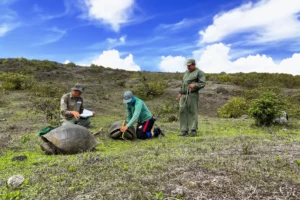
©Galápagos Conservancy
The team also conducted a significant expedition to the northern part of Isabela Island where they searched extensively for the last remaining pink iguanas Conolophus Marthae in their restricted habitat on top of Wolf Volcano. They made an important discovery during the expedition: two juvenile pink iguanas and one subadult were seen together for the first. This discovery is amazing because introduced species, mostly cats, are a serious threat to the juvenile pink iguanas. The observations show that the iguanas reproduce, which suggests that management efforts could be effective. This is an important finding, given that the pink iguana population is only estimated at 250 to 300 individuals.
Espanola Island has been the focal point of several expeditions aimed at protecting the Galapagos Albatross, PHOEBASTRIA irrorata. This endemic species is emblematic of the archipelago and its entire global population nests on this island. They spent several weeks in June and August counting albatrosses on the entire island to better understand the size, distribution and trend of the population. Data from previous years indicated a nesting population of around 35,000 adults, but numbers on the island decreased substantially in 2023. This was likely due to El Nino, conditions that prevailed during 2023 and are now receding, allowing a population recovery in 2024.
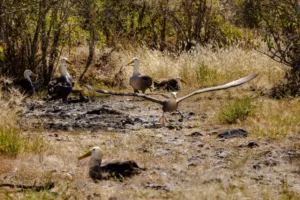
©Galápagos Conservancy
A second expedition to Santiago Island was a decisive step in helping the endangered “Darwin tortoise”, or Chelonoidis Darwini. Only 1,000 to 1,200 of these tortoises remain. The International Union for Conservation of Nature has classified these tortoises as “Critically endangered” since 2015. This indicates the need for immediate interventions to ensure their survival. The team collected 169 tortoise eggs and 112 hatchlings in November 2023. They were then transported back by helicopter to the Breeding & Rearing Center, Santa Cruz Island. There they will be raised and reintroduced within five years.
The fourteen expeditions of the team in 2023 were a huge effort and logistical feat. The 14 expeditions of the team in 2023 were a huge effort and logistical feat. They also represented the ongoing, earnest efforts of the Iniciativa Galapagos Program to protect the wildlife of Galapagos at the most remote and difficult to access areas. They are committed to protecting the Galapagos ecosystems and they could not do it without your support. They are working together to preserve these natural treasures in Galapagos and ensure their protection and recovery.
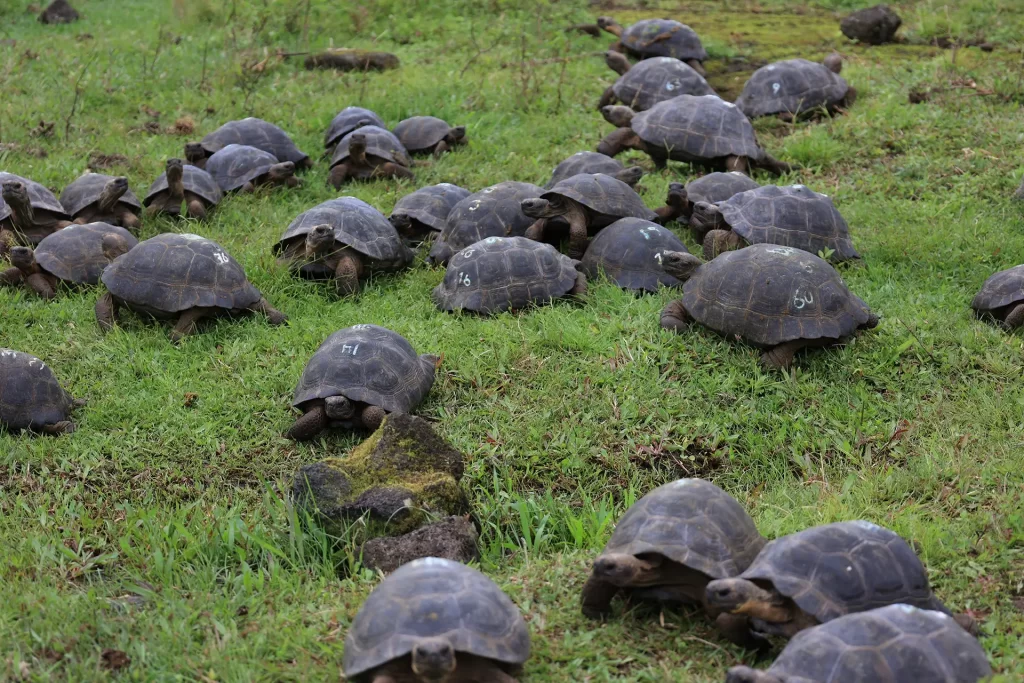
©Galápagos Conservancy
Nature has once again captured our attention! La Cumbre’s eruption on Fernandina island has produced a spectacular and breathtaking sight. After 35 continuous days of activity, the lava flow has finally reached the sea, covering over 6 miles.
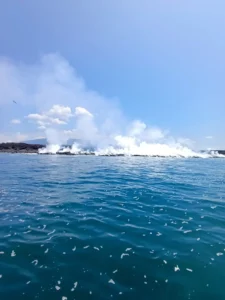
©DPNG
Since the 2nd of March, Galapagos National Park Rangers stationed in Canal Bolivar, northwest Isabela have used satellite data and seismic monitoring equipment, working closely with the Geophysical Institute.
The experts of the Galapagos National Park reported that the lava flows have damaged the island’s endemic plants and habitat of land iguanas. The experts also expect that the lava flow could have an impact on marine life if it enters the ocean.
Galapagos Conservancy’s mission is to protect the unique wildlife of the Galapagos Archipelago, says Dr. Our Director of Conservation, Jorge Carrion. “We are prepared to provide assistance, if needed, but we also understand that this is a naturally occurring occurrence and our primary responsibility to observe the changes.”
According to reports by the Geophysical institute of the National Polytechnic school, La Cumbre is one of most active volcanoes on the Galapagos islands. The volcano has had a long history of eruptions, dating back to 19th century. Similar events have also occurred in the recent past, such as in 2017, 2018 and 2020. Most recent activity has been ongoing since 2024.
Nature is currently undergoing one of its most dynamic and fascinating events. Galapagos Conservancy is committed to protecting the unique archipelago, including all of its special features.
Keep an eye out for updates on the ever-changing geological evolution in the Galapagos.
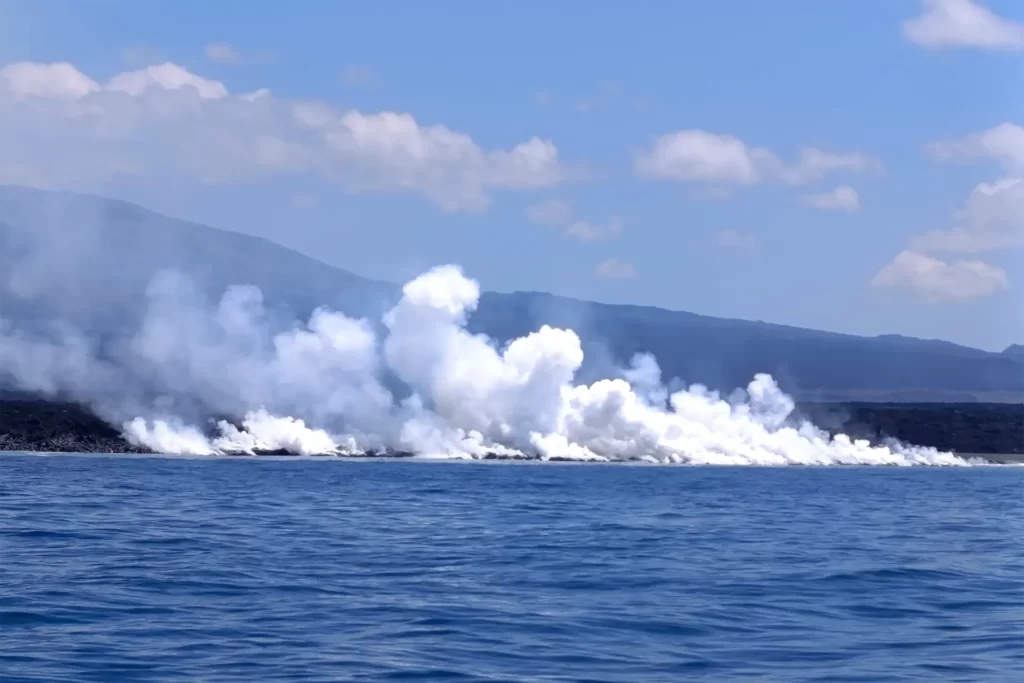
©DPNG
Galapagos’ unique biodiversity is still waiting to be explored, especially in the fascinating nocturnal ecosystems of many islands. There are still many questions about two bat species: the gray bat and the red bat. Are these Galapagos populations of these bats really distinct? Do they fly from one island to another? We don’t even know the most basic information about them, such as where they prefer to live and their daytime roost.
A collaborative research project is currently underway between the Galapagos National Park Directorate and the Universidad Particular de Loja with funding provided by the Galapagos Conservation to shed more light on these fascinating flying mammal. The project aims to uncover the secrets of Galapagos’ bats.
Strategic Collaboration Unveils Bat Secrets
Since September 2020, the research team and collaborators of the Galapagos National Park Directorate have been searching for bats in the islands of Santa Cruz and San Cristobal. Isabela and Floreana are also being explored. The team is studying the life of bats through the sounds they make at night and inferring their patterns of behavior. During their research, the team has solved several mysteries.
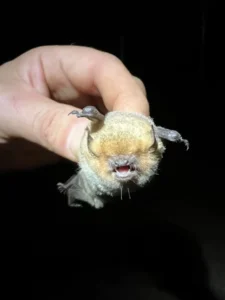
©DPNG
The team found that after three years of research bat activity patterns are seasonal, and closely tied to insect abundance, which is the primary food source for bats. The team also placed radiotransmitters onto bats in order to gain a unique insight into their habits, movements and resting places during the day. Bats are found in an array of habitats including those that have been invaded by vegetation.
Researchers have found that bat activity peaks around 11:00 PM. They captured bats both in natural settings and under artificial lighting. The density of bats also varies depending on the location. The study showed a concentration of bats in the area of Colorada Lagoon on San Cristobal Island. This could be due to bats being attracted to water bodies where insect food is abundant. The large difference in males and females in both species raises concerns about the population status of these species, highlighting the importance of further research.
This study is a major step forward in the understanding of Galapagos Bats, and has a far-reaching impact that goes beyond science. In order to achieve this, a comprehensive training program was given to park rangers, as well as other community members in San Cristobal, which laid the foundation for a stronger and more efficient collaboration with the goal of conserving the bats of the archipelago. Tapia emphasized that “proper team preparation maximizes not only the quality of data collected, but also ensures the legacy of research will endure through strengthening local capacities for the conservation of Galapagos Bats.”
The Next Steps in Bat Protection
The research team will conduct a genetic analysis on Galapagos Bats after collecting biological and audio samples. This analysis will give a deeper understanding of the genetic diversity of Galapagos bats by island and their movement between islands, as inferred by patterns of gene flows among bat populations. The team also laid the foundation for a long term monitoring program using advanced techniques to collect data on these species’ distribution and abundance.
We owe our gratitude to the generous donors who made these studies possible. We emphasize the importance in partnering with Galapagos National Park Directorate who are our main allies for research and conservation. It is vital that we work together to preserve species like the bats on this archipelago.

©DPNG
Fernandina is one of the most beautiful islands in the Galapagos Archipelago. The island is 247.87 square mile in size and boasts an active volcano rising 4842 miles above the sea level. The volcano’s crater is 4 miles wide. Fernandina, the youngest island of the archipelago has unique ecosystems that are not found anywhere else on Earth.
A Haven for Wildlife

©Galápagos Conservancy
Fernandina is a wildlife refuge despite being home to the most active volcano in the world. The island is home to a diverse range of wildlife including land and marine Iguanas, fur seals and penguins as well as endemic species like mockingbirds and finches. Fernandina also has breathtaking landscapes, unique ecosystems, and a story which fascinates scientists and nature lovers worldwide.
Discovering the Giant Tortoise of Fernandina
The scientific community was stunned in 2019 when the living Fernandina tortoise Fernanda was discovered. The discovery of this tortoise as the last individual of its kind, Chelonoidis Phantomasticus has reignited the hope for the conservation of an endangered species. The discovery of this tortoise was significant and extraordinary, inspiring conservationists around the world to act to protect endangered species.
Fernandina Conservation: Challenges and Commitments
Fernanda’s story is even more poignant because despite numerous expeditions another individual has not been found. The Giant Tortoise Rearing and Breeding Center is located on Santa Cruz Island. It reminds us of the fragility and importance of protecting the Galapagos Archipelago’s natural treasures.
Fernandina is a place of special beauty where science and conservation meet to preserve a natural treasure. This effort also provides an unforgettable experience for scientists and park rangers, challenging them to do their best in protecting our planet’s biodiversity.
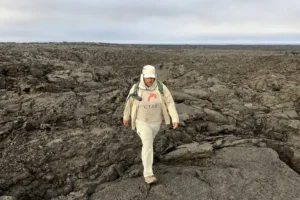
©Galápagos Conservancy
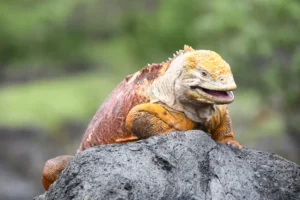
©Jorge Carrión / Galápagos Conservancy
Dr. Jorge Carrion is the Director of Conservation for Galapagos Conservancy. He highlights the importance of the efforts and dedication of the rangers of the Galapagos National Park Directorate. Their commitment to long-term preservation of Fernandina’s unique nature remains undiminished.
The fight for conservation is now more important than ever. We can only do this if we want future generations to be able to enjoy the natural beauty of Fernandina.
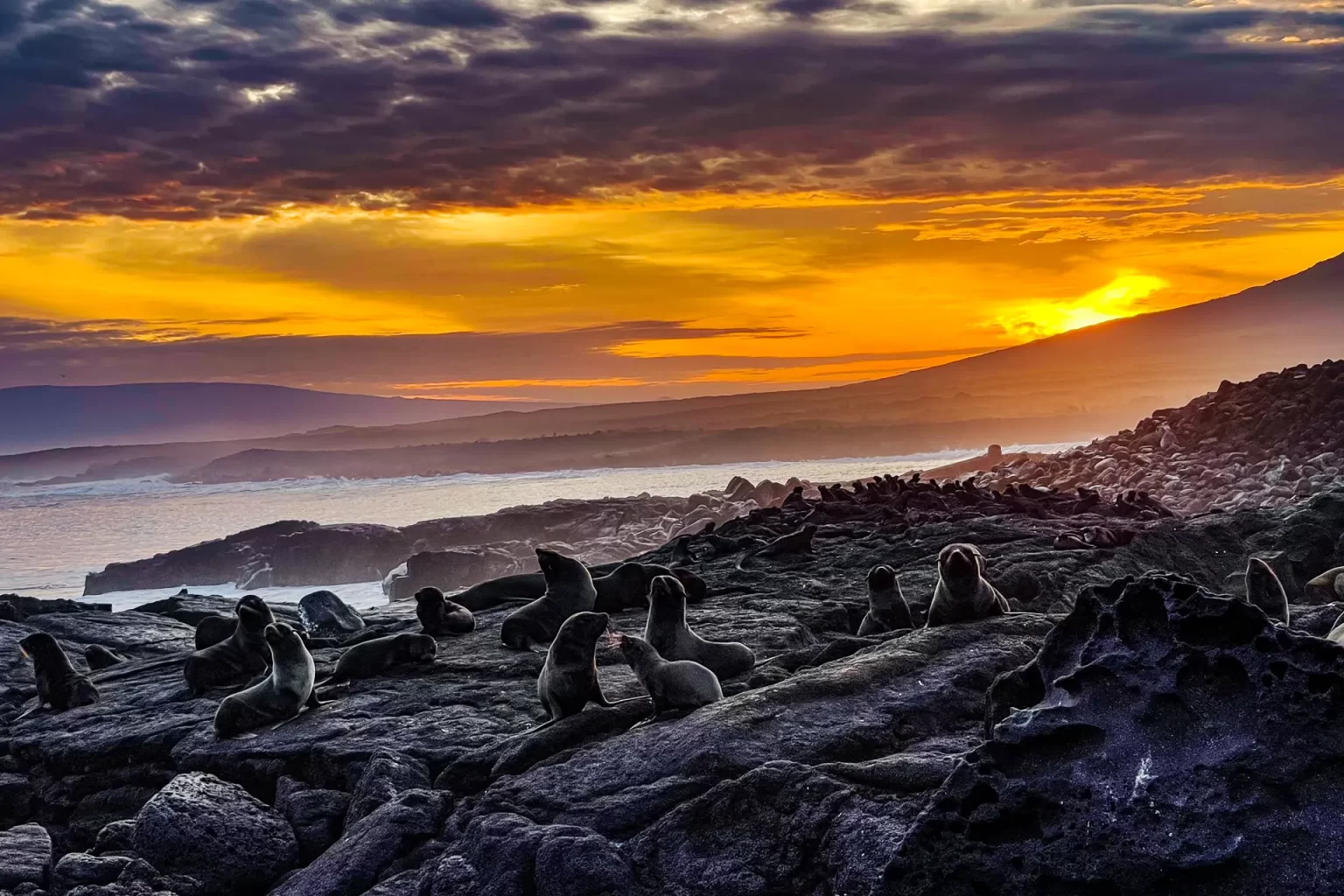
©Jorge Carrión / Galápagos Conservancy